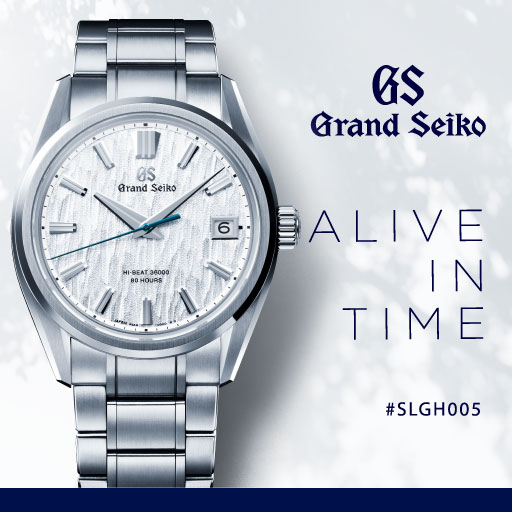EXHIBITION

Hirado Egg-Shell Ware & Mikawachi Porcelain of Japan
400 Years and Beyond
The Nippon Gallery at The Nippon Club is pleased to host the exhibition of Hirado Ware & Mikawachi porcelain. The history of Mikawachi ware and the fascination of eggshell ware are introduced with resources both past and present.
Mikawachi was the capital of pottery as well as the fiefdom of Hirado domain. The wares produced in the Edo period (1603-1868) are called Hirado ware, while the wares produced after the 19th century are called Mikawachi ware. The first Hirado Tousyo was appointed by the feudal lord to establish one of the purveying kilns to Hirado government in 1637. Under the protection of the Hirado feudal administration, Hirado ware was significantly developed and prized as presentation wares for the shogun, the emperor and their families. Such ware and its production method were inaccessible for ordinary people until the end of the Edo period.
The sophisticated underglaze cobalt blue painted on the pure white porcelains, the reticulated openwork, the low relief decorations called “Okiage”, and the thin-walled porcelains can be seen only in Mikawachi ware. Above all, extremely thin and lightweight porcelain wares called “eggshell wares” weighing only 30 grams fascinated Europeans, and became widely popular as one of the thinnest wares in the world. The eggshell wares are still preserved in foreign museums and viewable around the world.
Hirado ware had been exported mainly by the Dutch since 1830, and the eggshell wares gained especially high popularity in the Netherlands. Some articles about eggshell wares are recorded in books and journals by people who visited Hirado in the 1800s. Also, the eggshell ware received a great acclaim in the article of London international exhibition in The Times. Around 1900, however, the potters in Mikawachi were giving up making eggshell porcelain due to change in demand, and eventually the production methods were lost, about 100 years ago. The thirteenth generation of Hirado Tousyo, Gakuei Fujimoto, focused on the high level of the lost production method of eggshell ware and its quality. He identified the materials, forming and firing techniques through countless tests and researches and, in 2006, finally revived the eggshell porcelain.
This exhibition presents the history of Hirado/Mikawachi ware, the production methods of eggshell wares which were rediscovered by Fujimoto, the antiques as well as modern porcelains representing today’s Mikawachi, and the outstanding techniques such as reticulated openwork, okiage (low relief) and sometsuke (blue and white/underglaze blue). Through the spectacular exhibits, you will experience the inherited soul and passion of great potters of Mikawachi.
The characteristics of Hirado/Mikawachi ware
Eggshell ware:
Eggshell ware is extremely thin and light; it does not look like a porcelain at all. Also, the body changes its color from unique pure white to soft color like a white bulb when irradiated.
Sometsuke (blue and white/underglaze blue):
Sometsuke is a type of technique that decorates elaborate paintings on white porcelains with gosu pigment. The sensitive designs are painted one by one with a brush. The porcelains painted with Sometsuke technique show a spatial effect and perspective by adjusting the color density like no other. It is just like a cobalt blue ink-wash painting portrayed on pure white porcelains.
Karako-e (literal translation of karako in English is “Chinese male child”):
Karako-e was introduced to Japan as a Chinese underglaze pattern and was used mostly in Mikawachi as a specified design for the purveying kiln to Hirado government. Reputedly, the karako-e wares on which seven children were painted were made exclusively for the shogun, the emperor and their families; five children for the feudal lord; and three children for the commoner.
Reticulated openwork:
Reticulated openwork is a technique to put some lightness into porcelains. Openwork is applied on body porcelains before firing.
Okiage (low relief):
Okiage is not engraving, but decorates patterns by applying paste ceramics little by little. Hirado ware established this technique earlier than pate-sur-pate, which is a decoration style of Sevres ware manufactured in France.
Exhibit highlights
•Drawing design of Hirado ware
Instructional books on design drawing, made at the request of Hirado feudal administration. Hirado wares that are assumed to have been made based on these books are preserved in domestic and overseas museums including the Metropolitan Museum of Art and the British Museum.
•Antique eggshell porcelain
Finest eggshell wares were produced in Mikawachi in the 19th century and exported to western countries. Some of them are still preserved in museums around the world.
•Modern Eggshell Porcelain
Modern eggshell porcelain wares produced by Fujimoto, the 13th generation of Hirado Tousyo, using the production method of eggshell porcelain ware. Like the modern interpretation of inherited cup and saucer style in the purveying kilns to Hirado government, unprecedented shapes are created so as to fit the modern life style.
•TV documentaries of Gakuei Fujimoto (DVD)
The programs filmed by NCC and NHK convey a clear image of how he rediscovered the materials and documents through his researches.
•Eggshell porcelain coffee cup and saucer with design of karakos on the sea shore
The cups and saucers were presented to the King and Queen of Sweden when they visited Nagasaki. Karako-e is painted with sometsuke. The landscape similar to the coastline in Sweden is painted to depict the beauty of nature.
•Taihaku eggshell porcelain coffee cup and saucer
The cups and saucers were presented to the Crown Prince of Japan when he visited Nagasaki. They were made in accordance with his request: “no painting decoration, only sign kiln name inside the foot ring.”
•Signboard
The signboard, which was received from the feudal lord of Hirado, is said to have been displayed at a shop in Dejima Island, Nagasaki. The letters called “Toetsukan” are engraved and painted in gold. “Toetsukan” means “a building to view ceramics”
•Picture of the 9th and the 10th Hirado Tousyo
The picture is said to have been taken at Ueno Hikoma phot studio in Nagasaki, which is known as the place where Ryoma Sakamoto, a famous samurai who was active at the end of Edo period (1603-1868), had a picture of himself taken.
•Antique reticulated incense burner with dragons
An incense burner is made with Hirado’s special modelling technique.
•Koun
A descendant of Imamura Yajibei (also known as Joen). Inheriting a white porcelain throwing technique, Koun paints botanical designs and whales, etc., with fine lines in the traditional style. He was selected as a Contemporary Master Craftsman by Japan’s Ministry of Health, Labour and Welfare.
•Kasen
While handing down the history of the purveying kilns to Hirado government, Kasen also produces tableware and articles for modern lifestyle.
•Antique eggshell porcelain, 14cm plate in gold-brocade style
The saucer is one of the eggshell coffee cup saucers produced for the Centennial Exhibition held in Philadelphia in the early Meiji period (1868-1912). The name “Fujimoto” is signed inside the foot ring.
Foreign museums where Hirado wares are preserved
The Metropolitan Art Museum (USA)
The Los Angeles County Museum of Art (USA)
The British Museum (UK)
The Victoria and Albert Museum (UK)
The National Museum of Scotland (UK)
The Ferenc Hopp Museum of East Asian Arts (Hungary)
The Prague National Gallery (Czech Republic)
The Naprstek Museum (Czech Republic)
The National Museum of Ethnology (The Netherlands)
Organized by The Nippon Club
Sponsored by the J.C.C. Fund (the Japanese Chamber of Commerce and Industry of New York)
With support from The Japan Foundation, New York, Nagasaki Prefecture, Sasebo City and Mikawachi Pottery Industries Co-operative Association
In collaboration with Gokogama, Koungama, Kasengama, Nagasaki Museum of History and Culture Chief curator Hisako Matsushita, Ayatakado, WA art Gallery, TV (NCC, NHK)
Supervisor: the 13th Hirado Tousyo
Art Coordinator: Shoko Hayashi
| Period | June 23 (Thu) – July 20 (Wed), 2016 |
|---|---|
| Hours | 10:00 am – 6:00 pm (Monday - Friday) 10:00 am – 5:00 pm (Saturday) |
| Location | The Nippon Gallery at The Nippon Club 145 West 57th Street, 7th Floor, New York, NY 10019 |
| Admission | Free |
| Detail | Tel (212) 581-2223 E-mail info@nipponclub.org URL: www.nipponclub.org |





